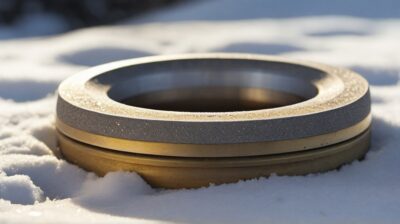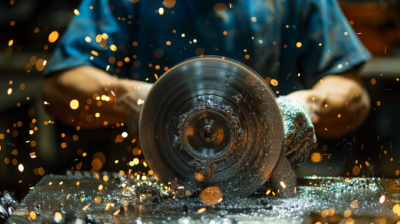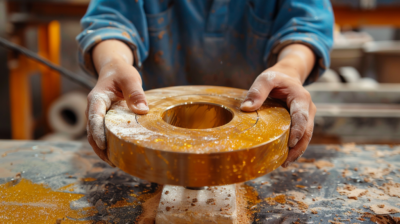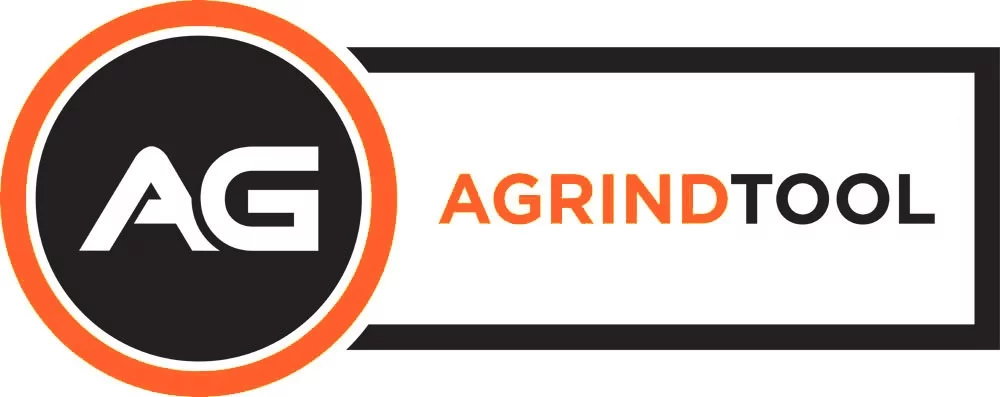Introduction
As the core tool in grinding processes, grinding wheels directly affect processing quality, efficiency, and costs. Therefore, when selecting grinding wheels, it is necessary to comprehensively consider multiple factors, including the characteristics of the workpiece, the performance of grinding wheel abrasives, and other important factors. This article will elaborate on these factors in detail, aiming to assist readers in making more rational and precise decisions in grinding wheel selection.
Workpiece Considerations
Material and Hardness
- Different workpiece materials have different requirements for grinding wheels, such as steel, non-ferrous metals, non-metals, etc.
- The hardness of the material directly affects the grinding wheel’s wear rate and grinding efficiency. Therefore, it is necessary to select appropriate grinding wheel formulations and types based on material hardness and other characteristics.
Processing Areas and Shapes
- Consider the processing areas of the workpiece, such as flat surfaces, outer circles, inner circles, curved surfaces, etc.
- Workpiece shape determines the adaptability and grinding methods of the grinding wheel. For conventional shapes like inner holes, outer circles, and flat surfaces, sintered or electroplated grinding wheel abrasives can be selected. For workpieces with complex shapes, electroplated grinding wheels are usually preferred because they can better adapt to complex shapes.
Grinding Allowance
- The size of the grinding allowance determines the degree of grinding wheel wear and grinding time.
- Choose the appropriate type and granularity of grinding wheel according to the grinding allowance. When the grinding allowance is large, coarse-grained grinding wheels should be selected to improve grinding efficiency.
Precision and Surface Finish Requirements
- Workpieces with high precision requirements need to select high-precision grinding wheels.
- Surface finish requirements affect the selection of grinding wheels. Coarse-grained grinding wheels are suitable for workpieces with large grinding allowances but may not meet high surface finish requirements. In this case, finer-grained grinding wheels need to be used in multiple steps to achieve the required surface finish.

Grinding Wheel Abrasives
Shape and Specifications
- Choose the appropriate grinding wheel shape according to processing requirements, such as flat, beveled, cup-shaped, etc.
- Consider specifications such as diameter, thickness, and aperture to ensure compatibility between the grinding wheel and the processing equipment.
Granularity and Hardness
- Granularity determines the size of abrasive particles on the grinding wheel surface, affecting grinding efficiency and surface quality.
- Grinding wheel hardness determines the degree of bonding and self-sharpening of abrasive particles, thereby affecting the durability of the grinding wheel.
Bond Type
- Select the appropriate bond type, such as metal, resin, ceramic, etc., according to processing requirements and grinding wheel performance requirements.
Current Equipment and Processing Methods
- Consider factors such as the power, speed, and grinding methods of existing equipment when selecting grinding wheels.
- Choose the appropriate type and material of grinding wheel according to the processing method (dry grinding, wet grinding), for example, when wet grinding, it may be necessary to select grinding wheels with good water resistance.

Other Important Factors
Safety Performance
- Select grinding wheels that meet safety standards to ensure safety during processing.
- Pay attention to the maximum working speed and balance requirements of the grinding wheel to prevent breakage or vibration during high-speed rotation.
Economic Considerations
- Select grinding wheels with high cost performance based on processing costs and grinding wheel service life.
- Consider the replacement cycle of grinding wheels and grinding efficiency to reduce production costs. For example, choosing grinding wheels with good wear resistance can reduce the number of replacements and improve production efficiency.
Environmental Factors
- Choose appropriate grinding wheel materials and grinding methods according to the production environment to reduce environmental pollution.
- Consider environmental protection requirements for grinding wheel treatment and waste disposal, and choose grinding wheels and grinding methods that meet environmental standards.

Conclusion
Grinding wheel selection is a comprehensive process that requires decision-making based on workpiece characteristics, grinding wheel abrasives, and other important factors. Through this guide, readers can gain a more comprehensive understanding of the key factors in grinding wheel selection, thereby making more rational and precise choices to improve processing quality and efficiency. In practical applications, it is also necessary to flexibly adjust grinding wheel selection strategies according to specific circumstances to achieve the best processing results.

